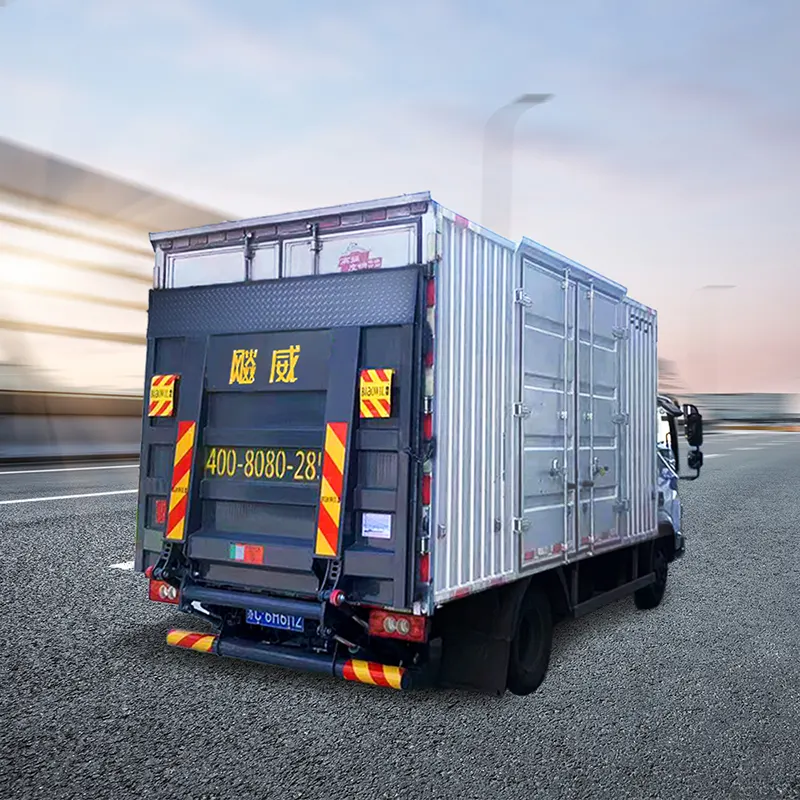꼬리 리프트는 어떻게 작동합니까??
구월 20, 2024
꼬리 리프트는 정기적 인 안전 점검이 적용됩니다, 그들이 올바르게 작동하고 정격 용량을 들어 올릴 수 있도록 웨이트 테스트를 포함합니다.. 체중 테스트 빈도는 국가의 규정에 따라 다릅니다., 산업 표준, 그리고 사용 유형, 그러나 다음은 일반적인 지침이 있습니다:
- Annual Weight Test(Common Practice)
In most countries, a weight test for a tail lift is required at least once every 12 개월. This is a standard safety inspection that verifies the lift can handle its maximum rated load without malfunctioning or becoming unstable.
UK and EU regulations: Under LOLER (Lifting Operations and Lifting Equipment Regulations), a weight test for tail lifts must be carried out annually by a certified technician. - Six-Monthly Thorough Examination
In addition to the annual weight test, some countries require a thorough examination of the tail lift every six months. This includes checking the hydraulic system, electrical components, structural integrity, and overall safety of the tail lift.
If the tail lift is used for lifting people, more frequent inspections and tests (every 6 개월) are mandatory under safety regulations. - After Major Repairs or Modifications
A weight test should be conducted any time significant repairs, modifications, or adjustments are made to the tail lift. This ensures that the lift operates safely following any work performed on it. - Operational Use and Environmental Conditions
Heavy Use or Harsh Conditions: Tail lifts that are used intensively or in harsh environments may require more frequent inspections and tests. Some companies adopt a 6-month weight test schedule if the tail lift is subjected to frequent or heavy loads. Why Regular Weight Testing is Important:
Safety Compliance: Regular weight tests help ensure compliance with local safety regulations (like LOLER in the UK or similar regulations in other regions).
Preventing Accidents: Regular testing ensures the tail lift is capable of safely lifting its rated capacity, preventing potential accidents or equipment failures during operation.
Extending Equipment Lifespan: Detecting issues early through testing helps maintain the longevity and reliability of the tail lift, reducing the risk of costly repairs or replacements.
결론적으로, most tail lifts require a weight test once a year, but depending on the regulatory requirements, usage conditions, and after major repairs, more frequent testing may be necessary. Always refer to local regulations and manufacturer recommendations to ensure compliance.
--- 끝 ---
